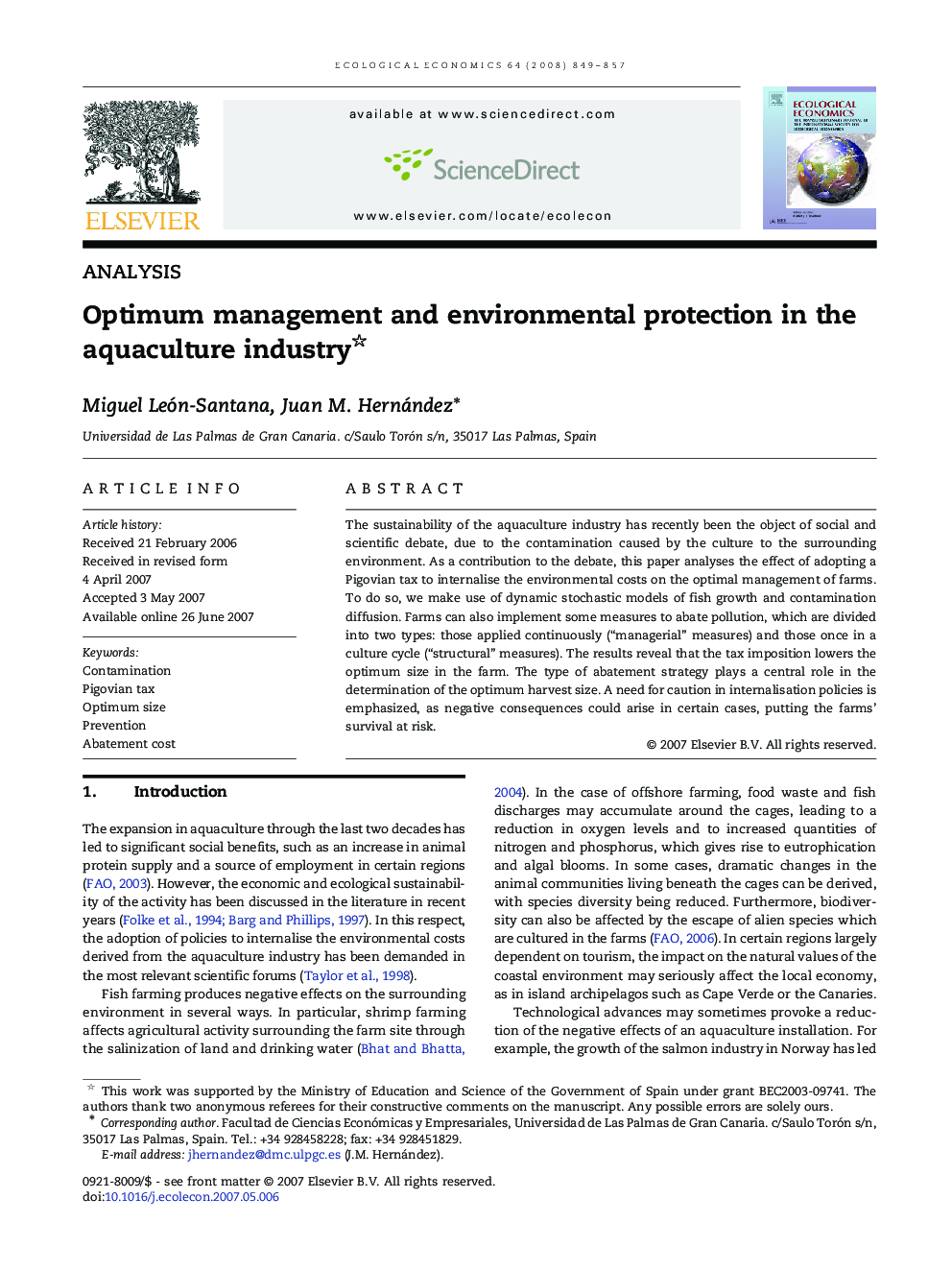| Article ID | Journal | Published Year | Pages | File Type |
|---|---|---|---|---|
| 5052020 | Ecological Economics | 2008 | 9 Pages |
The sustainability of the aquaculture industry has recently been the object of social and scientific debate, due to the contamination caused by the culture to the surrounding environment. As a contribution to the debate, this paper analyses the effect of adopting a Pigovian tax to internalise the environmental costs on the optimal management of farms. To do so, we make use of dynamic stochastic models of fish growth and contamination diffusion. Farms can also implement some measures to abate pollution, which are divided into two types: those applied continuously (“managerial” measures) and those once in a culture cycle (“structural” measures). The results reveal that the tax imposition lowers the optimum size in the farm. The type of abatement strategy plays a central role in the determination of the optimum harvest size. A need for caution in internalisation policies is emphasized, as negative consequences could arise in certain cases, putting the farms' survival at risk.
